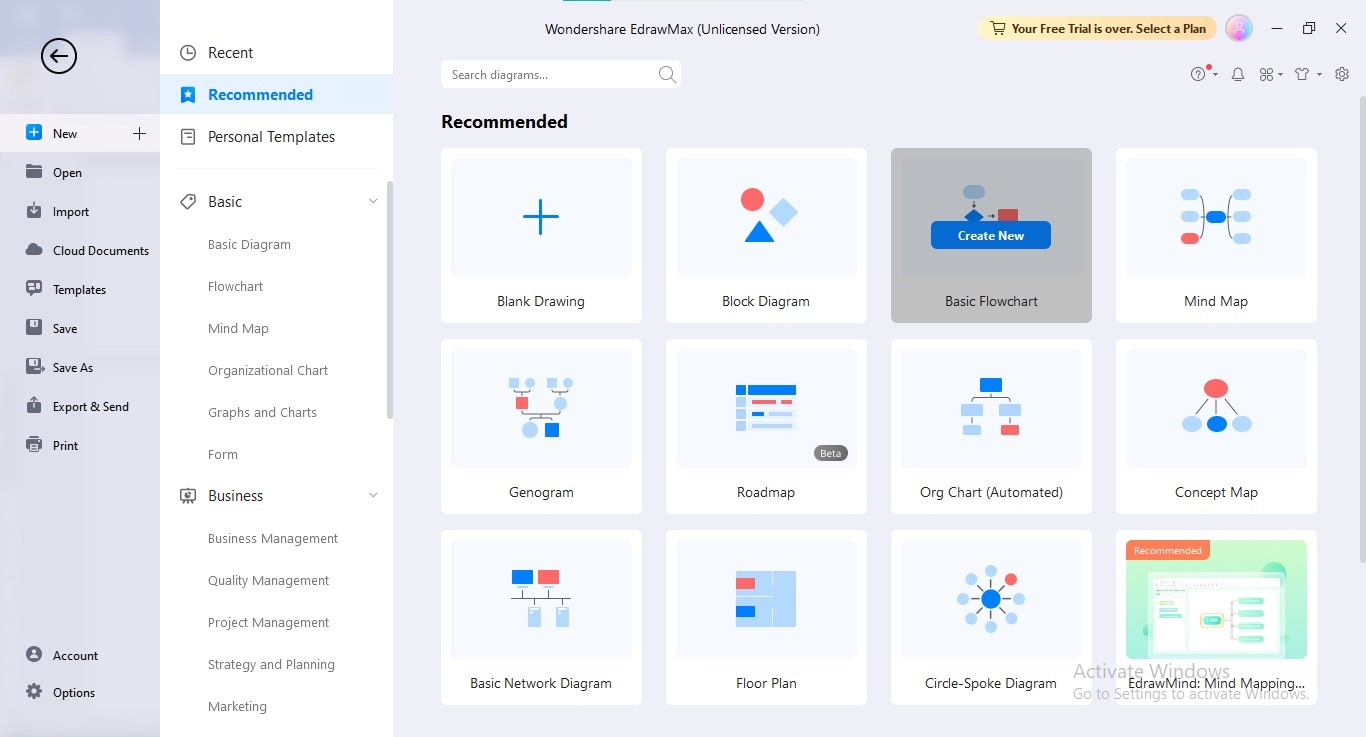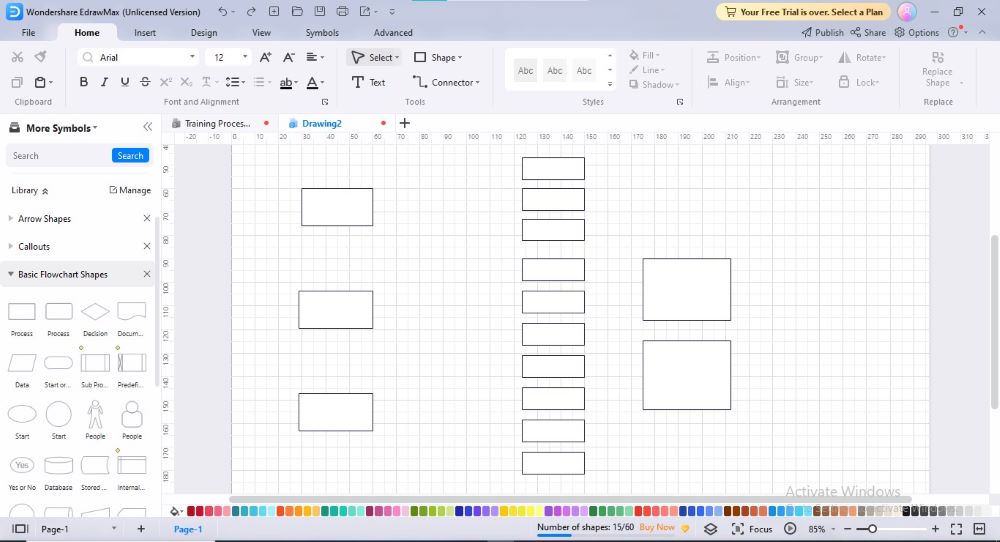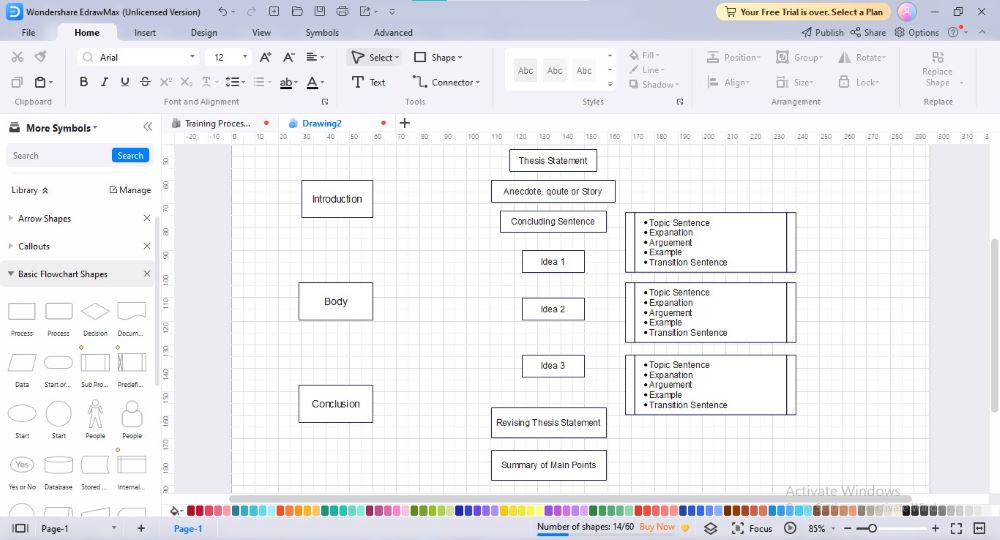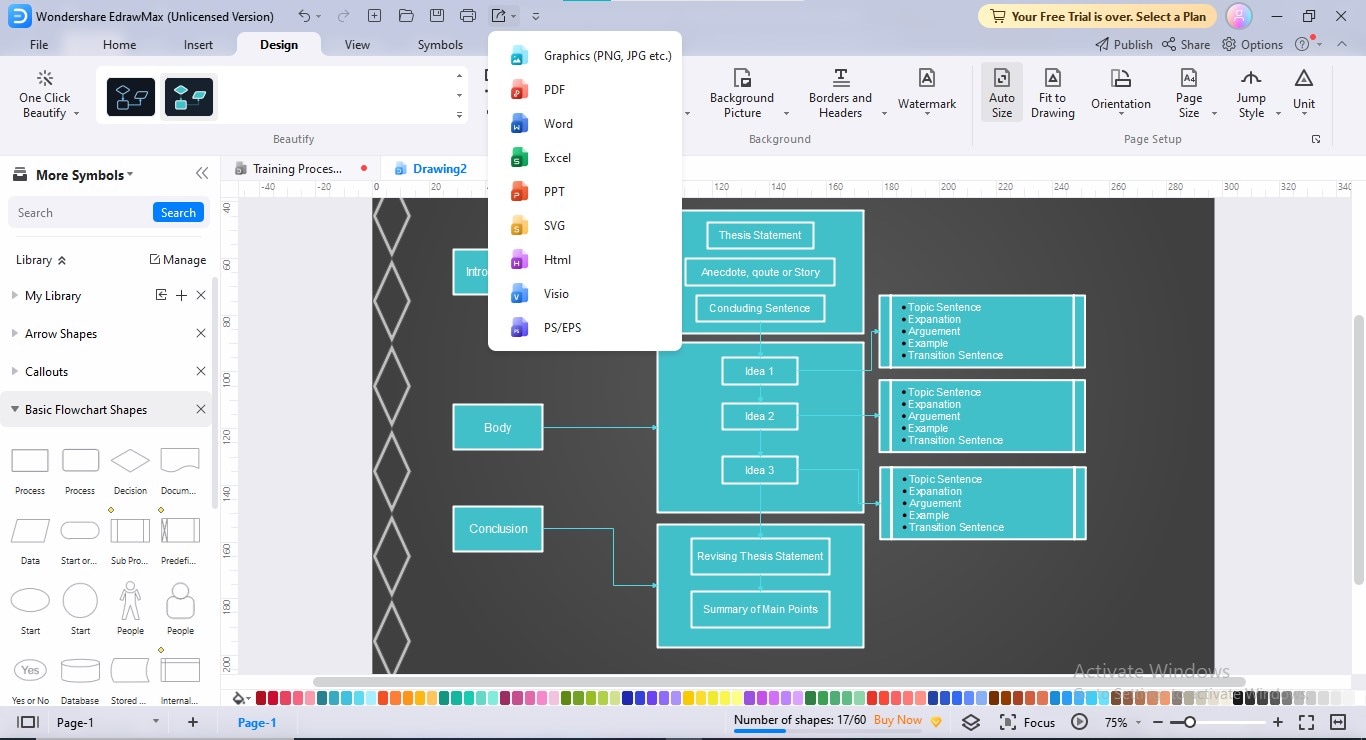
Composing a consummate essay entails nurturing an argument from a coherent collection of ideas. An essay must express its notions logically to foster intelligibility and radiate ideas unambiguously to the reader. A successful essay structure pays attention to the reader's cognition; thus, it is undeniable to affirm that an insight-provoking essay concentrates pivotally on its structure to instill cognition about the subject matter in readers’ minds.
To strategize your essay’s structure, you can employ an essay flowchart, resulting in an enhanced pattern understanding. In this comprehensive tutorial, we will instruct you about crafting a flawless essay flow chart to organize your ideas plausibly and attractively, driving more audience & attention to your composition.
1. Introduction to Essay Flowcharts
Regular practice is key to proficient essay writing skills; rewriting, reviewing, revising, and reediting your content allows you to polish your writing, making your compositions accomplished & flawless. However, before writing your content, you should clearly conceive what to discuss in the start, & middle and how to ascend ideas to culmination.
Essay flow charts are the visualized solution, depicting how your essay will proceed, what content it will contain, and where & how to eventuate it. You can use a tech-inspired solution, such as reliable diagramming software, to create an essay flowchart for your prospective topic.
2. Craft The Comprehensive Essay Flowcharts with EdrawMax!
Downloading essay flowchart templates and customizing them in Word or PowerPoint can be a time-consuming task; using a professional diagramming solution, you cannot only save valuable time but also invest that spare time in composing your artwork to foster productivity.
Whether a student, researcher, business professional, content creator, or teacher, you can create a marvelous essay flowchart using EdrawMax. Its easy-to-use customization features, navigable interface, infinite canvas, quick menus, smart alignment features, & multiple export formats enable the every-range user to design, configure, share, and save flowcharts for a memorable drawing experience. Additionally, you can unearth the relevant template from EdrawMax Templates Community and personalize it to create a shortcut essay flowchart.
3. Examples of Essay Flowchart Templates
EdrawMax Templates Community is replete with essay flowchart templates to assist users in finding the relevant prototype for their academic projects. Let’s explore some best essay flow chart templates from the EdrawMax inventory:
Writing Essay Flow Chart Template
Research
The first step to writing an essay is researching the intended topic via different sources, i.e., the internet, books, journals, newspapers, research papers, dissertations, and other relevant stuff.
Brainstorming
After researching the topic, ideas will pop up in your mind, also called brainstorming. Brainstorming encompasses jotting down all the random ideas emerging in your mind after research.
Organizing Ideas
When you note all concepts, organize them, demarcating which idea should fit which place in the essay since it is a sequential flow of ideas. If you write a narrative essay, recount events accurately to constitute a flow; for example, a hero’s success cannot be mentioned before his early life description, climax plot, or fight with the villain.
Drafting & Revising
After organizing your ideas, make a rough draft by composing the essay, considering all the points. The next step is revising your essay; read your essay thoroughly multiple times and ensure there are no mistakes. If any modification is needed, amend those paragraphs or sentences.
Formatting & Finalizing
Format your essay by removing spelling, & other formatting mistakes, imparting it a finalized form; send the finalized essay to your instructor or press for review or publishing.
Press Release Essay Flow Chart
A press release is an official document composed by a company’s content experts to publish in the press, intended either to promulgate important news or disseminate information relevant to a particular event. Most businesses follow a general structure for press release writing, presented below:
Compelling Headline
The heading is the first thing reader notices in the first glimpse; your heading will determine whether the reader will continue reading your press review article. Compose a heading that is not only attention-grabbing but also gives useful information about the specific company’s event.
Body Content
Your press release's core content should be informative but not long-winded because it tires the readers. Make your content’s body concise, relevant, informative, and engaging.
Engrossing Quote
A well-used quote mesmerizes the audience's attention, bringing your information to life. Content experts often use a brilliant quote at the start or end to aggrandize their press release articles.
Background Details
You can also provide contextual information to impart better insights into your company’s goals, products, events, branding, etc. For example, if you are composing a press release for a brand event, you can describe its background and reasons for its occurrence.
Academic Essay Flowchart Template
The above academic essay flowchart illustrates the major sections of a typical essay, highlighting how academic writing flows to the termination. The following are the significant proximal limbs of an essay:
Introduction
The introduction contains the thesis statement of your essay, declaring your essay’s intention in clear & concise words. You can start an introduction with a thesis statement, quote, story, reference, or reason to assert your main idea; the pivotal concern is quality, conciseness, and attractiveness.
Body
The body of your essay is the core, containing the ideas clump depicted logically; even the sentences in body paragraphs conform to a specified structure. The body discusses ideas one by one in paragraphs, depending on the type of essay. Each body paragraph comprises a topic sentence summarizing that whole paragraph as a gist, explanatory sentences, arguments, examples, and a concluding sentence.
Conclusion
The conclusion entails reiterating your thesis statement and summarizing the main concepts of your essay. The conclusion should not contain new ideas; you need to recount previous ideas concisely to create a recap in readers’ minds.
Essay Sequence Plan Flowchart Template
If you’re writing a persuasive, compare & contrast, or argumentative essay, the most important aspect is how you present your arguments to the readers. The general rule of thumb is to depict the strongest argument containing sufficient arguments.
Validation of Arguments
Always make sure the arguments you’re divulging to your readers are authentic, accurate, and valid to avoid confusion, misapprehensions, & information inaccuracy. You can use primary and secondary sources, such as books, research papers, etc., to verify your arguments.
Determining Essay’s Structure
The structure of an essay depends on its type; for example, a narrative essay follows a sequential structure. In contrast, descriptive, persuasive, informative, compare & contrast, and argumentative essays generally follow no definite structure.
Essay Planning Flowchart Template
The above flowchart explains how an essay streams and develops ideas. The first thing is the thesis statement, the most decisive component in your essay determining the whole essay’s quality. Relevance, brevity, appeal, communicativeness, and signification are the main requisites of a thesis statement.
Capturing Introduction
The introduction is the launching point that makes readers acquainted with your topic. You can make your introduction attractive by starting with a pivotal reason, recounting an issue, describing any relevant situation, or more.
Arguments Development
To develop your argument, introduce your idea to the readers via a topic sentence. The topic sentence explains the major concept involved in the entire paragraph. Afterwards, you can develop and strengthen your arguments using examples, allusions, stories, logical reasoning, and other techniques.
Making a Powerful Conclusion
A conclusion should be communicative enough to remind users of all the main concepts discussed in the essay. The concluding sentences mostly repeat the thesis statement to portray a panoramic picture of the topic.
How To Design an Essay Flowchart Using EdrawMax?
You can follow two alternative routes to craft an essay flowchart via EdrawMax: using a template and starting from scratch. Follow the steps below to create your essay flowchart from scratch:
Step1
Start by launching “EdrawMax” on your device.
Step2
Go to the “New” option in the left menu, hover over the “Basic Flowchart” tab, and click the “Create New” button.

Step3
Make a draft structure flowchart on a notebook first to sketch the progressive layout of your essay.
Step4
Draw process shapes in accurate sequence through drag-and-drop from the Symbols Library.

Step5
Input relevant text in each box, making the blueprint of your composition to impart a structured shape to your essay flowchart.

Step6
Join all shapes in consecutive order to develop a stream, forging your diagram into a well-organized essay flowchart.

Step7
Customize your essay flowchart to enhance its expressiveness; to do so, go to the “Design” tab and perform your desired modifications regarding theme, colors, fonts, etc.

Step8
To export your essay flowchart, click the “Export” icon above and choose your preferred format.

5. Conclusion
Essay writing involves arranging your ideas in a rational sequence to establish an understanding among your readers about the topic. If you find essay writing intimidating and don't know how to commence, crafting an essay flowchart will help you stratify your cluttered ideas.
You can utilize one of the above-provided templates as a stencil to design your potential essay flowchart structure or employ EdrawMax to establish your essay layouts from scratch.





 below.
below. 



